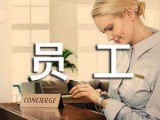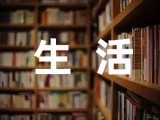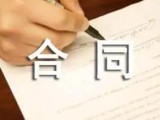unit 4 what would you do?i.learning objectives 教学目标skillfocustalk about imaginary (interesting/embarrassing) situationstalk about worries and advicelisten, describe and talk about personalitieslearn to write in reply learn to deal with new problems or situations using what you knowlanguagefocus 功能句式talk about imaginary situations(p26) what would you do if …? if i were you, i’d … if you were …, you would …talk about worries(p27-28) you shouldn’t worry about …i don’t know …what if …?what should i do?what problems do you have at home/school?i can’t ... the problems is that …what do you think i should …talk about personalities(p29) what are you like? i’m creative and outgoing.how confident are you? 词汇1. 重点词汇research, worry, exam, herself, circle, listener, knowledgeable, rest, shelf, cover, deep, downstairs, correct, burn, knee, hurt, offer, refuse, safety, helpful2. 认读词汇million, medical, pimple, energetic, confident, permission, bother, slight, annoy, fairly, plenty, represent, aid, first-aid, nearby, press, pain, treat, burn, spotty 3.   ; 词组what if, in public, in the slightest, plenty of, get along with, let … down, come up with, get along with, come out语法subjunctive mood: if i were you, i’d …strategyfocus1. matching2. sharing ideas with classmates/teachers3. using what you know culture focuswhat is the others’ attitude toward money?how do they deal with worries/problems?ii. teaching materials analyzing and rearranging 教材分析和重组1. 教材分析本单元以what would you do为话题,共设计了四个部分的内容:section a 该部分有4个模块:第一模块围绕what would you do if you had a lot of money?这一话题展开思维(1a)、听力(1b)、口语(1c)训练;第二模块围绕embarrassing situations(worries/problems) 进行听力(2a-2b)、口语训练(2c);第三模块继续就上一模块中的embarrassing situations这一话题展开训练,训练形式为阅读配对(3a)和角色表演(3b);第四模块仍就embarrassing situations以小组活动形式展开讨论。section b该部分有4个模块:第一模块是词汇的学习(1a)与运用(1b);第二模块围绕a personality survey继续对what would you do if…/i would…进行听力(2a-2b)、口语训练(2c);第三模块继续围绕a personality survey 这一话题展开阅读(3a)和写作(3b)训练;第四模块仍就a personality survey这一话题以口语训练形式展开小组活动。 self check该部分有2个模块:第一模块以填空形式对所学词汇进行训练;第二模块就一封e-mail展开阅读和写作训练。reading该部分共设置了5项任务:第一项任务以问题讨论的方式激活学生相关背景知识;第二项任务要求学生通过快速阅读获取信息;第三项任务利用讨论、写作等练习形式加深学生对阅读内容的理解;第四项任务要求学生能运用所学知识解决实际问题;第五项任务要求学生运用所学知识开展实践活动(做一次调查)。2. 教材重组和课时分配period i (section a: 1a, 1b, 1c) new function presenting period ii (section a: 2a, 2b, 2c, 3a, 3b, 4) practiceperiod iii (section b: 1a, 1b, 2a, 2b, 2c) vocabulary building period iv (section b: 3a, 3b, 4) integrating skills period v (self check: 1, 2 & workbook) writingperiod vi (reading: section 1—section 4) reading comprehension iii. teaching procedures and ways 教学过程与方式
period i new function presentinglanguage goals 语言目标1. words & expressions 生词和短语million, medical, research 2. key sentences 重点句子 what would you do if you had a lot of money? (p26)ability goals 能力目标enable the students to understand and talk about imaginary situations.emotion & attitude goals 情感和态度目标enable the students to form positive attitude toward money and be ready to help others deal with problems and worries.strategy goals 策略目标to understand the target language by reading picturesculture awareness goals文化意识目标people’s attitude toward money in english countries. teaching important 教学重点talk about imaginary situations, worries/problems.teaching procedures and ways 教学过程和方式step 1 revision and lead-inask one or more students to show their work.t: in the last unit, you were asked to do a project on a famous person’s childhood and how he/she became successful. now who’d like to display your project on the classroom wall?sample project:
edison’s childhood
there are many stories about what edison was like as a child. they all show that from an early age, edison was curious about the world around him and always tried to teach himself through reading and experiments.
surprisingly, little "al" edison, who was the last of seven children in his family, did not learn to talk until he was almost four years old. immediately thereafter, he began plea(各种工作总结、计划、报告、作文模板,尽在一路高升范文网)ding with every adult he met to explain the workings of just about everything he met. if they said they didn't know, he would look them straight in the eye with his deeply set and lovely blue-green eyes and ask them "why?"
at age 11, tom's parents tried to teach him how to use the resources of the local library. this led him to prefer learning through independent self instruction.
by age 12, tom had already become an "adult." he not only talked his parents into letting him go to work selling newspapers, snacks, and candy on the railroad, he had started an entirely separate business selling fruits and vegetables.....
by 14, tom became totally deaf in his left ear, and approximately 80% deaf in his right ear. he once said that the worst thing about this condition was that he was unable to enjoy the beautiful sounds of singing birds.
one of the most significant events in tom's life now occurred when — as a reward for his heroism — the boy's grateful father taught him how to master the use of morse code and the telegraph. in 1869, when edison was twenty-two years old, he patented his first invention and advertised that he "would hereafter devote his full time to bringing out his inventions."over the next years, edison's progress in creating successful inventions for industry really took off.then ask the students to tell what they can learn from edison.s: edison once said, “genius is 1% inspiration and 99% perspiration.” as for we students, we should make no excuse in our learning process and work hard every day to achieve our goals. t: edison had a really different childhood from us. he was the greatest inventor in the nineteenth century. of all his inventions, electric bulb, is one of the most important. but just imagine what the world would be if there is no electric bulb? today we’re going to learn how to talk about things that haven’t happened. step ii listing and speakingask the students to read the picture on page 26.t: when we talk about things that haven’t happened, we can use the words i would or i’d. now look at the picture on page 26. what can you see in the picture?s: we can see some people, a school, a zoo, a research lab, a bank.t: what are the people in the lower part of the picture doing?s1: maybe they are thinking about the answers to the question shown in the picture. s2: the woman is reading a newspaper and they are all thinking of the answers to the question. t: pretend you are the people in the picture, what would you do if you had a million dollars?s3: i’d buy a beautiful car.write buy a beautiful car on the blackboard. s4: i’d build a research lab. s5: i’d give it to the hope project.s6: i’d travel around the world.s7: i’d give it to medical research. …ask for more ideas from the students. write their ideas on the blackboard. buy a beautiful car, travel around the world, give it to the hope project, build a school for the poor children, build a library for our school, build a research labshow the following to the students and then ask them to practice in pairs. -what would you do if you have a million dollars?-i would (i’d) ____________. t: now work in pairs and make dialogues. sample dialogues:1. – what would you do if you saw someone stealing something?– i’d call the police.2. – what would you do if you lost your bike?– i’d buy a new one.3. – what would you do if you saw a girl crying in the street.– i’d help her find her mother. 4. – what would you do if the teacher asked you to sing a song to the class?– i’d say yes. 5. – what would you do if you found a wallet in the street? – i’d give it to the police. step iii listening ask the students t o listen to the recording and compare their answers with those in the recording. t: next we’ll hear a conversation about how to spend a million dollars. the recording will be played twice. for the first time, listen to get the order you hear.play the tape for the first time. t: for the second time, please number the picture in the order you hear them. play the tape for the second time. then check the answers.
step iv homework 1. ask the students to do more practice as required in 1c on page 26. ask the students to prepare for the next period: think about if you have any worries or problems in daily life.
推荐站内搜索:黑龙江自考成绩查询、教师考试题、小学生演讲稿范文、江西自考准考证打印、唯美日志、北京自考成绩查询、福建省自考成绩查询、学生会宣传部部长竞选演讲稿、山西成人高考、湖北自考成绩、


 Unit 4 What would you do?
Unit 4 What would you do?



